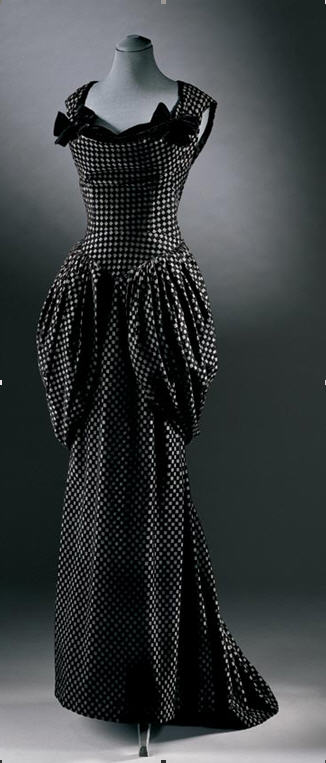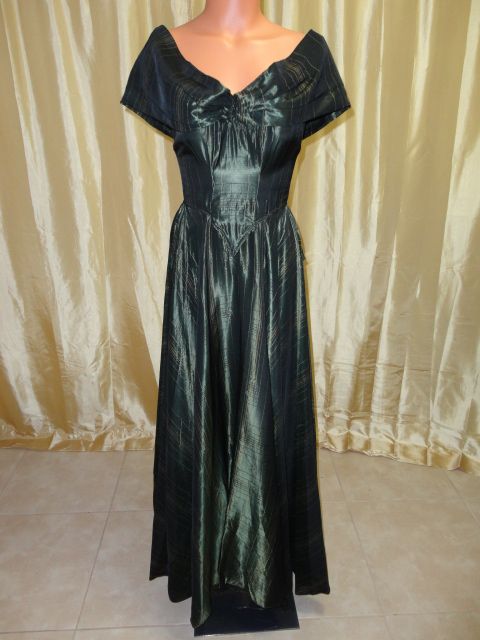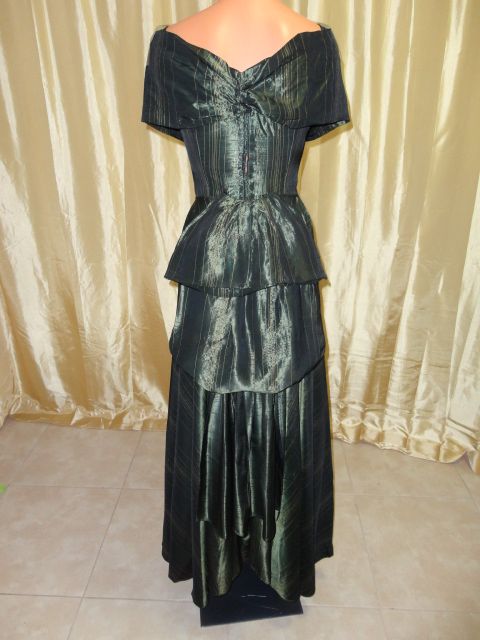vgirl, hate to be contradictory but I'm going back to Victorian costume again - I can't get past that construction and deep V waistband, which I haven't seen in any 20th century styles. Unless there is evidence of the hook and eye tape being added in, my vote is with costume.
Of course, you're most welcome to ignore my opinion, it is after all, only the opinion of one who can not see the dress as I think it's meant to be presented (full crinoline skirt, shoulder sashes sitting higher up) and can not inspect the construction.
Nicole






